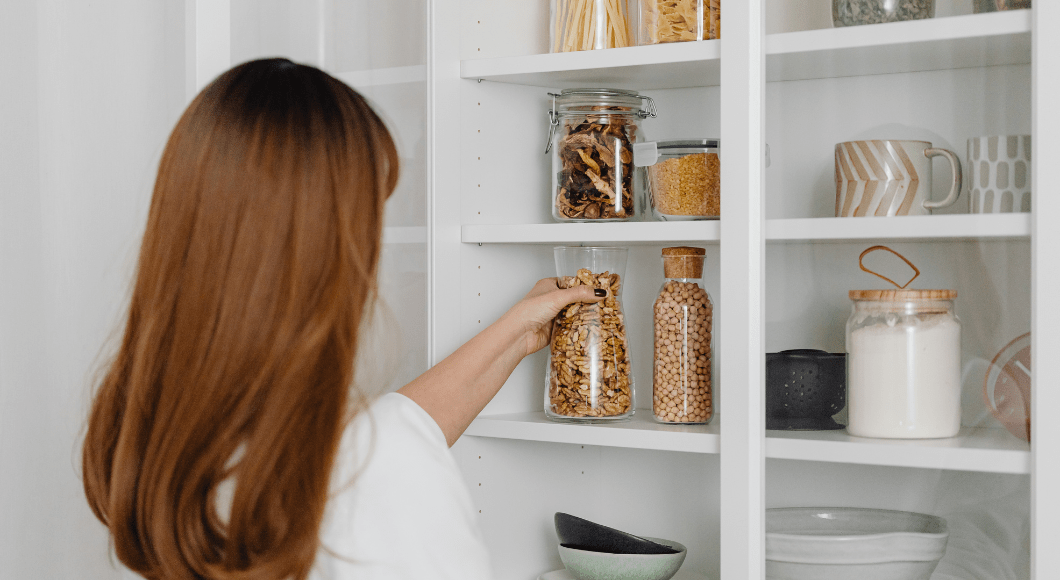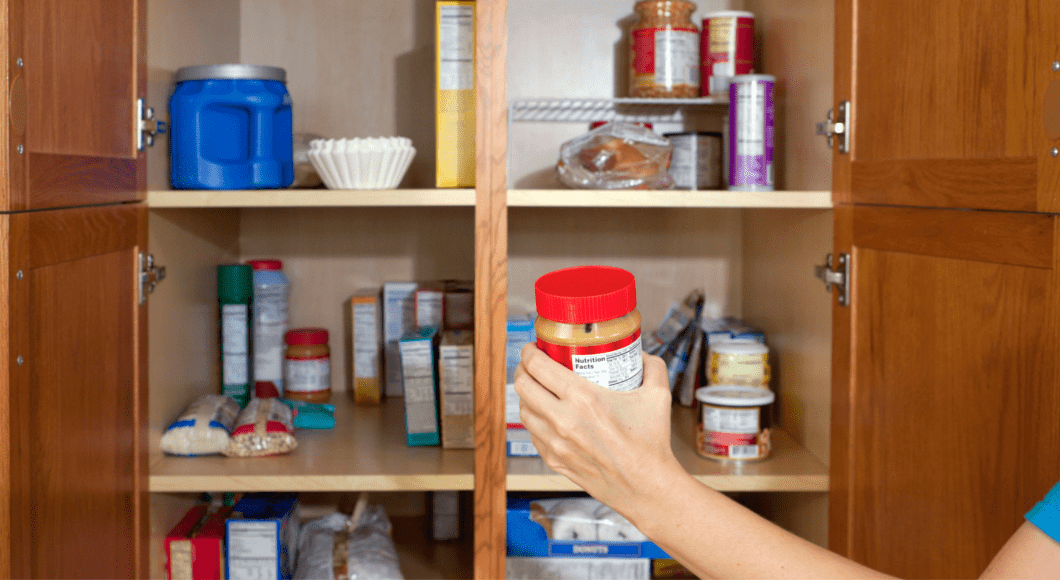
If you are trying to build a habit of cooking healthy meals at home with a busy schedule, an organized pantry can make all the difference. Here are some tried-and-true pantry organizing tips I have learned from my own cooking and organizing journey.
1. Buy Less, Shop More Often
We know positive reinforcement helps children build good habits. It turns out the same is true of adults. The shame you might feel at the end of the week throwing out a wilted, unopened bag of spinach is not a great motivator for building a habit of cooking more healthy meals at home. An empty fridge and pantry, on the other hand, gives your brain a boost of dopamine like a chemical pat on the back keeping you on track with your goals.
The secret to joining the clean fridge club is to:
- Build a realistic meal plan around your schedule and what you already have in stock.
- Buy only what you need for this week.
Without excess back stock, you will have a bare pantry at the end of each week as visible proof that you saved money, ate healthier, and wasted as little as possible.
If you like to buy in bulk, be strategic about buying healthy family favorites in large quantities and buying new products or treats at the grocery store instead.
Why it works: Building a new habit is easier if it is reinforced by an instant positive outcome.
>> RELATED READ :: Meal Planning :: My Approach to Healthy School Night Dinners <<
2. Make Your Food Look Appealing
If you have visited a farmers market or high-end grocery store, you know that ingredients can be very enticing when displayed beautifully. Capture that same appeal at home with a few simple organizational products like clear bins and canisters.
I use these canisters in my home as rotating storage for snacks and bulk foods like grains or pasta. No need to fuss with labels or expiration dates because these are foods you will eat quickly and rotate weekly. For packaged foods you can’t go wrong with these pantry organizers.
Why it works: For better or worse, your family will eat what they can see and what looks yummy. Clear bins make healthy food look more appealing and give you a visual cue for how much unhealthy food you are consuming.
 3. Create Zones
3. Create Zones
A thoughtful approach to how items are organized in your pantry can impact what you are reaching for, which ultimately supports or hinders your goals. Reserve the shelves around eye level for ingredients and healthy grab-and-go items in clear containers. Relegate less healthy snacks and sweets to lower shelves and hide them in baskets or opaque containers.
Sort food into categories to easily find what you need. Here are some categories I typically find when organizing pantries:
- Baking
- Breakfast
- Cans and jars
- Condiments
- Mixes
- Oils and vinegars
- Quick meals
- Savory snacks
- Sticky stuff like nut butters/honey/syrup
- Sweet snacks
Why it works: When food is zoned, it is easy to find what you are looking for because each type of food is only in one place. It is also easier to gauge your stock level and control the stock of certain categories. For example, if you designate a small zone for sweets, you end up stocking fewer sweets.
4. Designate a Special Bin for Each Child
Anyone else have a young children who prefer snacks to actual food? Each day, place a pre-approved selection of snacks in a bin labeled with your children’s names. Store the bin on a low shelf in the pantry or fridge. Give them the freedom to choose when and what they snack on throughout the day with the understanding that when the bin is empty it will not be refilled until tomorrow.
Why it works: Your children feel empowered choosing their own snacks and you feel satisfied that they aren’t just eating junk. Win-win.
>> RELATED READ :: My Rules for an Organized Mom Life <<
5. Make Your Own Meal Kits
If you are new to cooking or struggling with remembering what you planned to prepare, try making your own meal kits as you unpack groceries. Label fridge bins with days of the week and fill each bin with all the ingredients for an entire meal. You can even add canned foods and grains from the pantry so everything is in one place. When dinnertime comes around you will be thanking weekend-you for having done half the prep work.
Why it works: It takes the guesswork out of preparing quick weeknight meals and decreases food waste as meal components are less likely to be forgotten.













